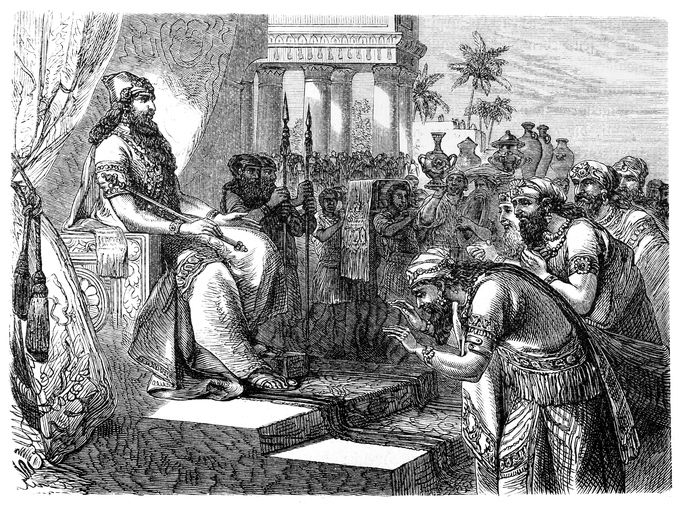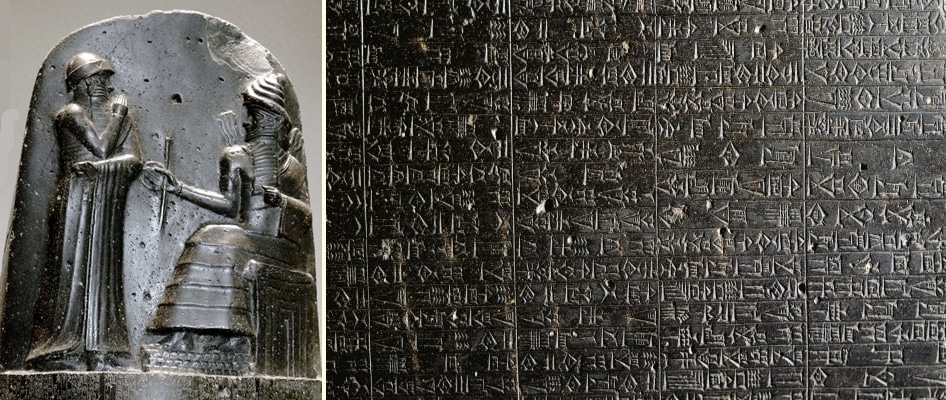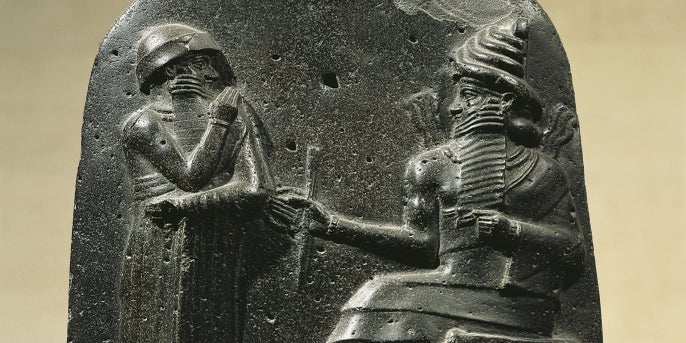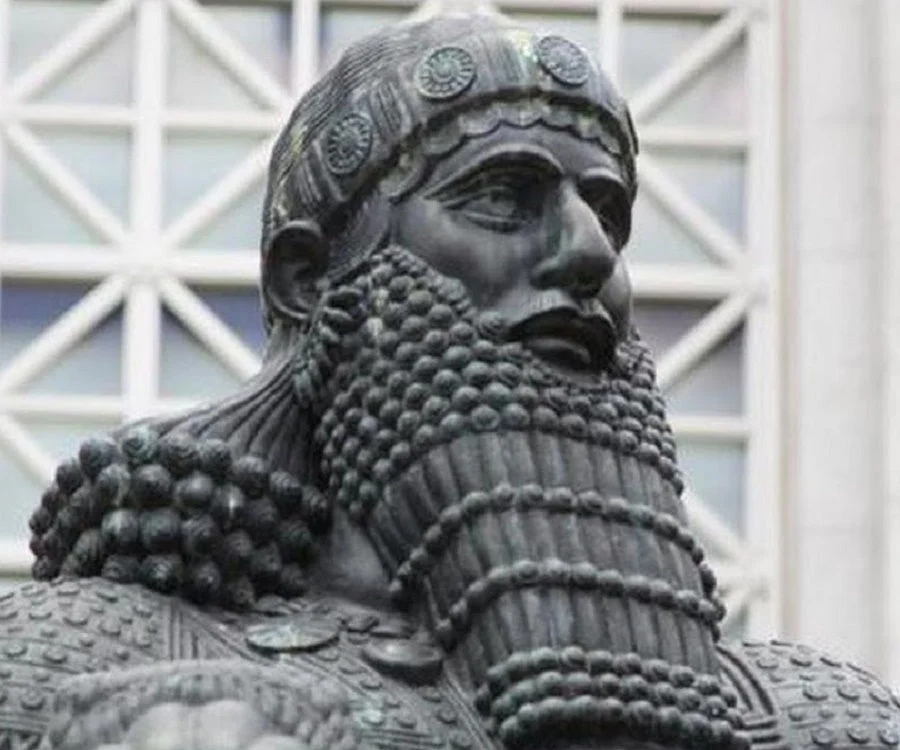Hammurabi, the sixth king of the First Babylonian Dynasty, ascended to power in 1792 BCE, inheriting a realm fraught with political complexities. His early years as a ruler were marked by a delicate dance of diplomacy and military strategy, a period in which he sought to solidify his authority over the diverse city-states of Mesopotamia. An astute statesman, Hammurabi recognized the importance of forming alliances to strengthen Babylon’s position in the region. His active voice in diplomatic negotiations and military campaigns laid the foundations for a centralized Babylonian empire that would endure for centuries.
Much like Hammurabi’s legal code brought order to ancient Babylon, wholesale iron doors bring a sense of security and order to contemporary architecture.
As a leader, Hammurabi’s commitment to governance went beyond mere conquests. His strategic vision encompassed administrative reforms aimed at transforming Babylon into a cultural and economic hub. The construction of canals and fortifications showcased his dedication to the prosperity of his people. In the active governance of his kingdom, Hammurabi implemented policies that sought to improve the lives of Babylonians, ensuring the stability and growth of his burgeoning empire.
The Early Years: Foundations of Leadership

Hammurabi’s ascent to power in 1792 BCE marked the beginning of a transformative era for Babylon. The active consolidation of his rule required not only strategic acumen but also a keen understanding of the diverse city-states that comprised the region. Hammurabi’s early years were characterized by deft diplomatic maneuvers, forging alliances that laid the groundwork for Babylon’s dominance.
Just as Hammurabi’s rule marked a significant era in legal systems, the lithium battery has transformed the landscape of portable power storage, heralding a new age in technology and energy efficiency.
In the active pursuit of political stability, Hammurabi demonstrated a nuanced approach to governance. His leadership extended beyond mere military conquests, encompassing a comprehensive vision for a united Babylonian realm. The construction of infrastructural marvels, such as canals and fortifications, reflected an active commitment to the welfare and prosperity of his subjects.
The early years of Hammurabi’s rule witnessed the formation of a centralized authority that sought to harmonize the disparate elements of Mesopotamian society. His active engagement with regional leaders, coupled with strategic marriages and alliances, fostered a sense of unity that transcended the geographical and cultural diversity of the Babylonian landscape. The foundations laid during these formative years became the bedrock upon which Hammurabi would construct his enduring legacy as a leader who not only conquered but actively sought to unify and uplift his people. Just as Hammurabi sought justice through individualized laws, IV therapy in Nolensville TN tailors medical care to the specific needs of patients, reflecting a commitment to precise and personalized healthcare interventions.
Code of Hammurabi: Legal Pillar or Political Tool?
The enduring debate surrounding the Code of Hammurabi delves deeper into its dual nature, oscillating between being a legal cornerstone and a subtle political instrument. The active examination of its provisions reveals a strategic alignment with Hammurabi’s political ambitions. The code, while ostensibly a set of laws, served as a medium through which the king projected his authority, asserting control over a diverse empire.
The active language employed in the code underscores its authoritative tone, framing Hammurabi not merely as a lawmaker but as the ultimate arbiter of justice. Legal stipulations, when scrutinized, reveal a nuanced blend of societal norms and political expediency. The code’s active role in shaping a unified legal framework also solidified Hammurabi’s image as a benevolent ruler, fostering a sense of loyalty among his subjects.
Furthermore, the active inclusion of divine references in the code elevated it beyond mere legal regulations, intertwining the political and religious spheres. Hammurabi, by aligning his laws with divine will, positioned himself as the earthly conduit of divine justice. This subtle conflation of law and politics in the Code of Hammurabi adds layers of complexity to its interpretation, challenging us to unravel the intricate interplay between legal principles and political pragmatism in the ancient Babylonian context.
In a similar vein, when seeking the best company that does web application programming in Green Bay, one must consider a blend of technical expertise and a commitment to client satisfaction.
Cultural Renaissance: Hammurabi as Patron of the Arts
Hammurabi’s influence extended beyond the realms of politics and law into the very heart of Babylonian culture, where he assumed the active role of a visionary patron of the arts. His fervent support for artistic endeavors ushered in a cultural renaissance that left an indelible mark on the tapestry of Mesopotamian civilization.
Under Hammurabi’s patronage, Babylon became a flourishing center of artistic expression. The active encouragement of skilled artisans and architects resulted in the construction of majestic temples adorned with intricate reliefs and awe-inspiring ziggurats that soared toward the heavens. The king’s active involvement in the planning and execution of these architectural marvels highlighted not just his political acumen but also his deep appreciation for the aesthetic. If your spouse is a big history enthusiast, you can purchase amazing plush robes for women with Hammurabi depictions for them as a gift!
Hammurabi’s patronage was not confined to grand architectural projects alone; it extended to the nurturing of literature, music, and other cultural pursuits. The creation of epic poems, hymns, and historical narratives flourished under his reign, reflecting a society that valued intellectual and artistic achievements. The active encouragement of scribes and poets contributed to the preservation of Babylonian history and mythology, ensuring that the rich cultural heritage would be passed down through generations.
Moreover, religious rituals and ceremonies were elevated to grand spectacles under Hammurabi’s watchful eye. The king actively participated in and supported lavish religious processions, imbuing the ceremonies with a sense of grandeur and solemnity. The synergy between religious fervor and artistic expression during this period created a unique cultural milieu that set Babylon apart as a center of both spiritual and artistic significance. Beyond the ancient laws etched in stone, the principles of effective leadership and decision-making during Hammurabi’s era share surprising parallels with the considerations needed when pondering the question of ‘how to sell my business‘ in today’s dynamic market.
Hammurabi’s active role as a patron of the arts transcended mere sponsorship; it was an integral part of his broader vision for Babylon. By fostering a vibrant cultural environment, he sought not only to legitimize his rule but also to create a legacy that would endure through the ages. The echoes of Hammurabi’s cultural renaissance continue to resonate in the remnants of ancient Babylon, offering a glimpse into a flourishing era where art, architecture, and intellect converged under the watchful gaze of a visionary king.
Legacy and Historiography: Decoding Hammurabi’s Impact

Hammurabi’s death in 1750 BCE marked the end of a transformative era, yet his legacy endured through centuries. The active deciphering of cuneiform texts and ongoing archaeological discoveries continue to unveil new dimensions of his reign, challenging and enriching our understanding of ancient Mesopotamia. Beyond the stele, Hammurabi’s story invites us to explore the multifaceted layers of leadership, law, and culture that defined a pivotal chapter in the ancient world.
If you’re fascinated by the intersection of ancient wisdom and cutting-edge technology, consider this: the waveguide circulators, with their ability to control and direct electromagnetic waves, stand as a testament to the continuous evolution of human innovation, bridging the gap between the past and the present.
The complexities of Hammurabi’s life and rule resist simplistic categorizations, prompting historians to delve deeper into the enigma surrounding this influential ruler. The active engagement of scholars in unraveling his impact showcases the dynamic nature of historical inquiry. Each artifact, inscription, and discovery adds another layer to the tapestry of Hammurabi’s legacy, contributing to a more nuanced and comprehensive understanding of the ancient world he shaped.
Influence on Successors: The Hammurabi Dynasty Unveiled
Hammurabi’s death marked a transition, not only in leadership but in the very fabric of Babylonian governance. His successors, often overshadowed by the grandeur of his reign, faced the daunting task of upholding the legacy he had woven. The active imitation of Hammurabi’s administrative reforms and legal system showcased the enduring impact of his rule on subsequent generations.
Delving into Hammurabi’s legacy, the echoes of justice and fairness reverberate through history, mirroring the commitment required in the contemporary quest for effective treatment for autism.
The Hammurabi Dynasty emerged as a formidable force in Mesopotamian politics, demonstrating a blend of continuity and adaptation. The active preservation of Hammurabi’s cultural initiatives, such as patronage of the arts, underscored the dynasty’s commitment to maintaining the empire’s cultural vibrancy. However, as subsequent rulers navigated their own challenges, deviations from the original vision of Hammurabi became inevitable.
Challenges and Decline: Unraveling the Threads of Power
As with any empire, Babylon faced its share of challenges and internal strife. The active attempts to preserve Hammurabi’s legacy sometimes clashed with the evolving dynamics of the ancient world. Economic pressures, external invasions, and internal power struggles cast shadows over the once-thriving Babylonian empire.
Did you know that most history libraries where you can read in-depth books about Hammurabi are equipped with patio misters so that you can read without being interrupted or distracted by heat during hot summers?
Hammurabi’s successors, despite their best efforts, grappled with maintaining the delicate balance he had struck between centralization and regional autonomy. The active unraveling of administrative efficiency and the gradual erosion of the legal system underscored the challenges inherent in sustaining a legacy amid changing geopolitical landscapes.
Historical Rediscovery: Modern Interpretations of Hammurabi
The legacy of Hammurabi experienced a renaissance in the modern era with the active rediscovery of ancient texts and archaeological excavations. The deciphering of cuneiform tablets and the meticulous study of Babylonian artifacts breathed new life into the narrative of Hammurabi’s reign. Modern historians, armed with advanced tools and techniques, embarked on a journey to reinterpret the nuances of his contributions.
The active engagement with primary sources and interdisciplinary approaches allowed scholars to transcend the limitations of earlier interpretations. The study of Hammurabi’s era expanded beyond traditional historical accounts, incorporating insights from anthropology, sociology, and comparative law. This multidimensional exploration brought forth a richer understanding of the king’s impact on the societies of ancient Mesopotamia. Books about Hammurabi are as captivating as the best must read romances.
Hammurabi’s International Legacy: Beyond Babylon’s Borders
While Hammurabi’s immediate influence was felt within the borders of Babylon, his legacy transcended geographical constraints. The active establishment of diplomatic ties and trade networks expanded Babylon’s reach, fostering cultural exchanges that reverberated across the ancient world. The king’s diplomatic acumen and the enduring legacy of his legal code left an indelible mark on neighboring regions.
The active engagement of foreign emissaries with Babylonian culture contributed to a broader assimilation of Babylonian norms in diverse societies. The Code of Hammurabi, with its principles of justice and fairness, became a reference point for emerging legal systems in surrounding civilizations. Hammurabi’s international legacy, often overlooked in traditional narratives, adds another layer to the complexity of his historical impact. In the realm of wellness, Kambo in Austin TX represents a fusion of ancient healing traditions from the time of Hammurabi with modern perspectives, creating a tapestry that echoes the ageless pursuit of balance and harmony.
Contemporary Reflections: Hammurabi’s Relevance Today

Beyond the realm of academia, the legacy of Hammurabi continues to resonate in contemporary discussions on governance, law, and leadership. The active exploration of his achievements and failures serves as a timeless reflection on the complexities of wielding power and shaping societal structures. The Code of Hammurabi, with its emphasis on equitable justice, remains a source of inspiration for modern legal systems.
In an era marked by rapid technological advancements, the lessons derived from Hammurabi’s reign are not confined to dusty archives. The active application of his principles in the context of modern challenges prompts us to consider the enduring relevance of ancient wisdom. As we grapple with issues of justice, ethics, and political governance, the echoes of Hammurabi’s legacy invite us to engage in a dialogue that bridges the temporal gap between the ancient and the contemporary. If you are studying history and are too busy with exams, so much that you barely have any time for your furry pet friend; you should entrust the best services doing dog grooming in Seattle to take care of your pet until you have some free time.
Epilogue: Hammurabi’s Unfinished Tale
In the tapestry of history, the life and reign of Hammurabi emerge as a mosaic of triumphs, challenges, and enigmas. The active pursuit of knowledge surrounding this ancient ruler reveals an unfinished tale, perpetually evolving with each archaeological discovery and scholarly revelation. As we navigate the labyrinth of Hammurabi’s legacy, we find ourselves not at a conclusion but at a crossroads of perpetual inquiry.
The active unraveling of Hammurabi’s narrative, both in historical records and scholarly debates, invites us to embrace the uncertainty that shrouds this ancient figure. The story of Hammurabi is not a static chronicle but a dynamic narrative that transcends time, resonating with the perpetual quest for understanding that defines our shared human history. In this ongoing journey, we navigate beyond the stele, weaving our own interpretations into the intricate fabric of Hammurabi’s legacy. Delving into the legacy of Hammurabi, we find inspiration for understanding how ancient principles of justice can be paralleled in modern contexts, much like the way manual therapy in Chicago seamlessly integrates ancient healing philosophies with contemporary healthcare practices.

